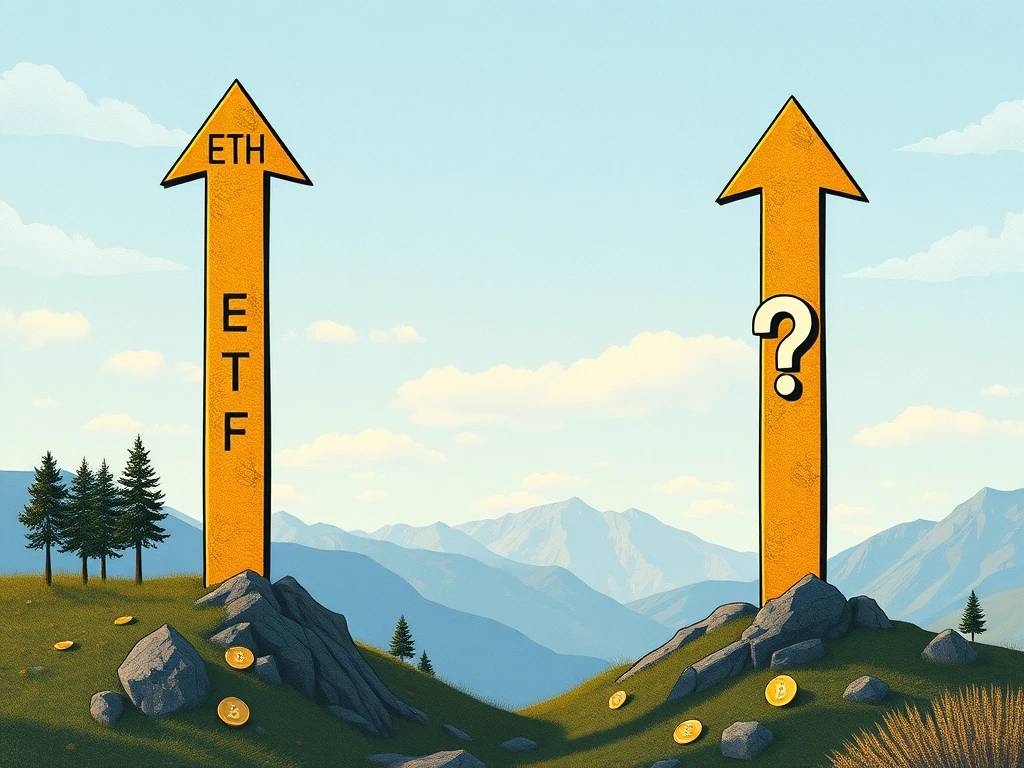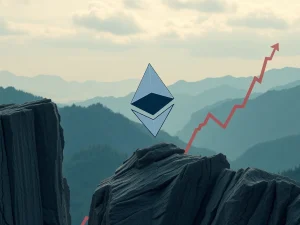Urgent Crypto Futures Data Signals Caution Despite Impressive ETH ETF Flows

While recent ETH ETF inflows have captured positive headlines, a deeper look into market data reveals a more complex picture. Despite significant institutional interest shown through these inflows, Ether’s price performance and derivative markets suggest traders are exercising caution.
Why Are ETH ETF Inflows Impressive?
Over a two-week period, Ether exchange-traded funds (ETFs) accumulated a substantial $322 million in inflows. This demonstrates continued appetite from investors, likely institutional, for exposure to Ether through regulated products. However, this positive flow hasn’t translated directly into a significant price surge for Ether itself. Analysts speculate that these inflows might be anticipating future enhancements to the ETFs, such as allowing ‘in-kind’ creations/redemptions or native staking operations, which could improve their appeal and utility.
Examining Ether Price Performance
In contrast to the bullish ETF data, the Ether price has faced headwinds, dropping 4% over the past week while the overall crypto market capitalization saw a modest gain. Ether’s failure to sustain a move above the $2,800 level on June 11 signals resistance and a lack of strong buying conviction needed for a significant rally. This underperformance, especially compared to Bitcoin trading near its all-time high, prompts questions about the immediate prospects for Ether reaching higher targets like $3,000 or $4,000.
Reading Signals from Crypto Futures
Analyzing crypto futures markets provides insight into how leveraged traders are positioning themselves. The perpetual futures funding rate for ETH has shifted from a positive 10% just two weeks ago to a negative 2% annualized rate currently. While not extremely bearish, a negative funding rate indicates that traders holding short positions are paying a premium to those holding long positions. This reversal points to reduced demand for bullish leverage and signals hesitation or even a slight bearish bias among futures traders at the current $2,400 price level.
Do Options Markets Confirm Caution?
To get a broader view beyond perpetual futures, examining Ether options metrics is crucial. The delta skew for ETH options, which measures the relative cost of put (bearish) versus call (bullish) options, sits within the neutral -5% to 5% range. Although it has improved slightly from a more bearish -7% two weeks prior, it doesn’t show significant demand for upside protection (calls being expensive) or downside hedging (puts being expensive). This suggests that while leveraged demand might be weak, there isn’t widespread fear of a major price collapse according to the options market analysis.
Considering the Altcoin ETFs Factor
One potential reason for the subdued demand for bullish ETH leverage could be the anticipation of other altcoin ETFs. Bloomberg analysts predict a high chance of approval for ETFs covering assets like Solana, Litecoin, Polkadot, and XRP in 2025. The prospect of diverse altcoin investment products could be influencing capital allocation decisions, potentially diverting some speculative interest that might otherwise flow into ETH derivatives.
Summary: Mixed Signals Require Careful Navigation
The current market environment for Ether presents a dichotomy: strong institutional interest evidenced by ETH ETF inflows versus cautious sentiment reflected in crypto futures and options data. While long-term prospects tied to Ethereum’s technology and potential ETF enhancements remain positive, the immediate price action and derivatives positioning suggest traders are not yet convinced of an imminent bullish breakout. Investors should monitor both institutional flows and derivative metrics for clearer signals on Ether’s short-term trajectory.









